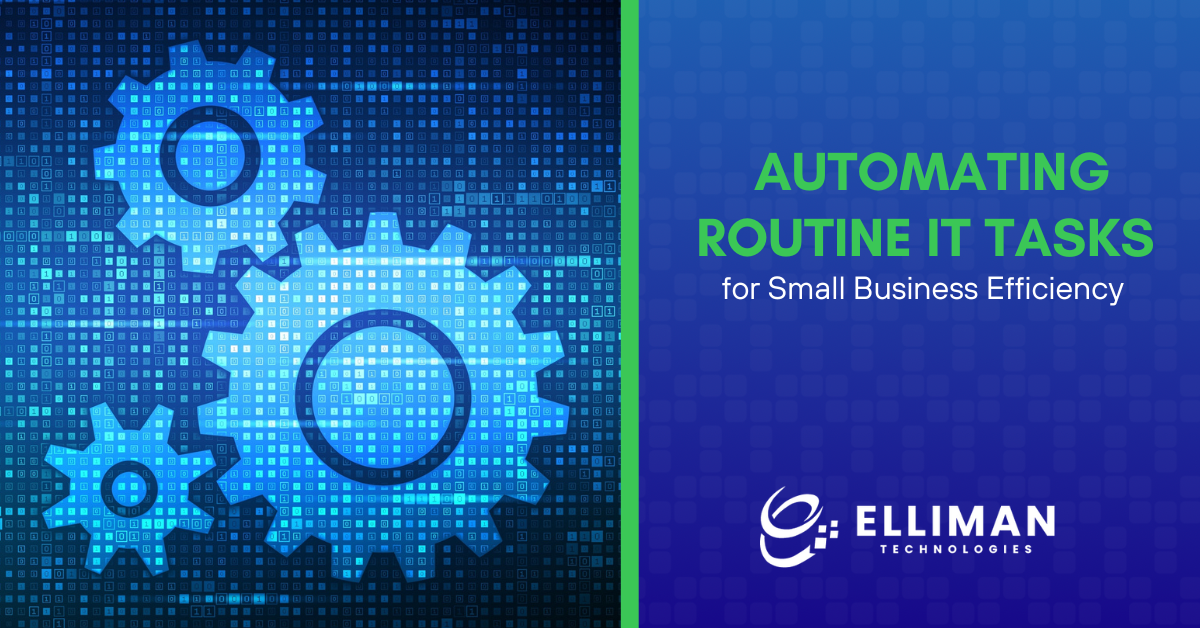Many small businesses still rely on manual IT management. Unfortunately, this approach is no longer sustainable. Routine tasks like software updates or data backups may seem minor, yet they can consume much time. Worse, manual processes are prone to human error, exposing your business to security risks or disrupting operations.
What IT Tasks Can Be Automated?
The good news is that many routine IT responsibilities can be automated. This will help you compete more effectively with more established businesses. In fact, a survey by Salesforce shows that over 70% of automation users say it helps them improve performance, while another study shows that automation can help SMEs reduce operational costs. Here are areas you can automate your IT tasks.
System Maintenance
Keeping systems up to date is essential but tedious. Consider automating software updates, patch management, and network monitoring to ensure your devices run smoothly. This reduces downtime and eliminates the risk of missing critical updates.
Data Management
Automate backups and recovery processes to ensure critical files are safely stored and can be restored quickly in case of an outage or cyberattack.
Security Tasks
Manually reviewing logs and scanning for vulnerabilities can overwhelm small IT teams with limited bandwidth. Automation makes this process more efficient by monitoring systems, flagging suspicious activity, and enforcing compliance checks without human oversight. It can even quarantine potential threats before they spread, reducing the risk of disruption.
For example, automated tools can detect repeated failed login attempts that may indicate a brute-force attack or unpatched software that leaves systems exposed. These real-time alerts allow you to act quickly and contain issues before they escalate.
User Management
This automation ensures new hires are quickly granted access to the tools they need to perform their assigned roles. It also revokes access for departing employees instantly, closing potential security gaps that could be overlooked.
This strengthens your security and reduces administrative overhead for IT teams. For example, integrating HR software with systems like Active Directory or Google Workspace allows user accounts to be created or disabled automatically as employee records are updated. This ensures that permissions always match an employee’s current status.
Workflow Automation
IT automation doesn’t stop at technical tasks. Consider integrating IT systems with business applications such as CRM to eliminate duplicate work and streamline operations across various departments.
Getting Started With IT Automation
Automating IT tasks might feel overwhelming, especially for small businesses without a dedicated IT department. That’s why having a structured plan is essential.
The first step is to define what you want to achieve, whether it’s reducing downtime, improving security, or saving employee hours. This makes it easier to track progress and evaluate the impact of automation.
Next, assess your current IT environment. Identify repetitive, time-consuming, or error-prone tasks. For example, if your team spends hours on software updates, automated patch management should be on your priority list.
After that, select the right tools. You don’t need enterprise-level platforms packed with features you’ll never use. Instead, choose cost-effective solutions that fit your business needs. This may include cloud-based solutions as they provide flexibility and scalability without requiring heavy investments.
Finally, establish ongoing monitoring and improvement. Automation is not a one-time setup. Regularly review performance, track key metrics such as downtime reduction or time saved, and refine processes as your business evolves. This ensures automation continues to deliver long-term value.
Implementing Automation Step by Step
Jumping into automation all at once can cause confusion and unintended disruptions. A gradual, step-by-step approach ensures success.
Start Small
Begin with low-risk, high-impact tasks such as automated backups, system updates, or email filtering. These areas provide quick wins, helping your team see immediate value from your efforts.
Scale Gradually
Once your initial automation runs smoothly, expand into more complex areas like workflow integration or advanced security monitoring. Scaling gradually gives your team time to adapt and ensures smoother adoption.
Monitor and Adjust
Automation is not a “set it and forget it” solution. Continuously review performance, track key metrics like downtime reduction or employee time saved, and adjust processes as needed. Monitoring ensures that automation delivers on its promises.
Balance Automation with Oversight
While automation reduces manual work, it’s important to maintain human oversight for critical functions. This means it should help staff to make decisions rather than replace them.
Let Us Help You Build a Smarter Business By Automating Your IT Tasks
If left unmanaged, routine IT tasks can slow productivity. When you automate these tasks, you’ll ensure your small business can now focus on innovation and growth.
That said, implementing IT automation doesn’t have to be complicated. You only need to identify key tasks, expand slowly, and maintain oversight. At Elliman Technologies, we help small businesses implement scalable IT automation strategies. Partnering with us gives you the tools and expertise to streamline your operations, reduce risks, and create a stronger IT foundation.
Get in touch with us to schedule your initial consultation.
Need Help Now? Just Ask!
Whether you’re having an IT emergency, facing a new cyber threat, looking for technology consulting, or just ready for a new digital plan, we’re here to help. Contact Elliman Technologies LLC now.

